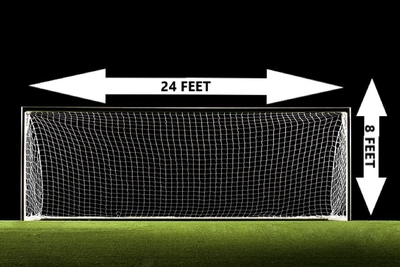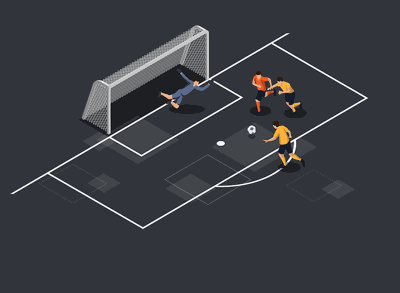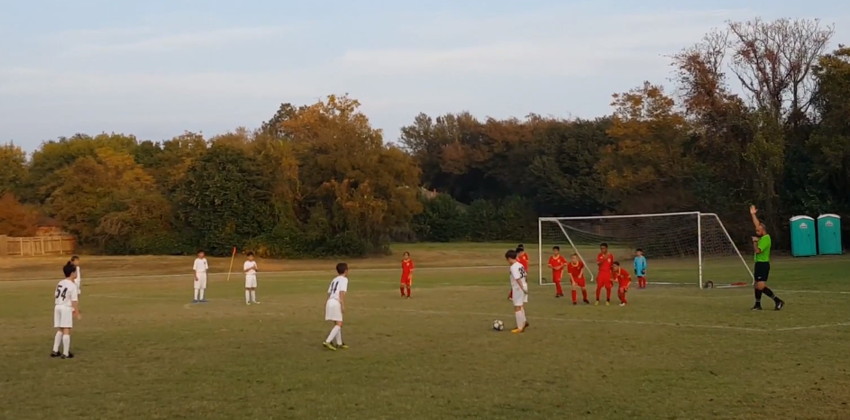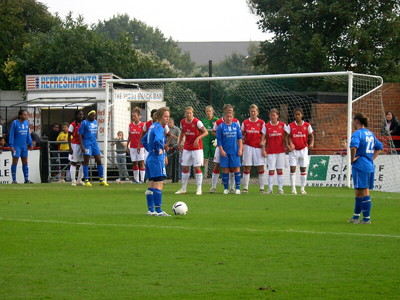 When it comes to football, it’s easy to assume that all goal sizes are the same. In many ways, that’s because it’s true.
When it comes to football, it’s easy to assume that all goal sizes are the same. In many ways, that’s because it’s true.
For teams playing in the likes of the Premier League and English Football League, the size of the goal in the grounds around the country will be identical so as to avoid the possibility of one team gaining an advantage over another by having a smaller goal to aim at.
That being said, not all goal sizes are the same if you look away from the top divisions. That is especially the case if you drop down to youth levels, where smaller goals are initially necessary in order to ensure that players are able to develop at a sensible rate.
Indeed, selecting the correct goal size depending on the age group that is being worked with can be a hugely important part of the process.
If you are interested in the history of the football goal and why it is the shape it is see our dedicated page.
Top Level Goal Size
 Let’s start with the goals that you’ll find involved in top-level football. According to the Football Association, an adult goal should have posts that are 8 foot high and a crossbar that is 24 foot long. This is what will be used on a pitch that is 116 yards long and 76 yards wide, if you include the safety area around the pitch. As you can read about elsewhere on this site, pitch sizes can differ slightly from each other.
Let’s start with the goals that you’ll find involved in top-level football. According to the Football Association, an adult goal should have posts that are 8 foot high and a crossbar that is 24 foot long. This is what will be used on a pitch that is 116 yards long and 76 yards wide, if you include the safety area around the pitch. As you can read about elsewhere on this site, pitch sizes can differ slightly from each other.
Just because the pitch sizes used in Premier League, Football League and European competitions can vary ever so slightly, that doesn’t mean that the goals will. The 8 foot height and the 24 foot length of the goals will include the connection areas, of course. It’s important to ensure that goals are all the same for the integrity of the game, much as footballs themselves need to be the same size.
Lower Level Goal Sizes

The above is very much the size of goals for professional football at the senior level, but the goal size when you drop down the age groups becomes smaller.
That’s in order to ensure that younger, smaller goalkeepers aren’t trying to stop a ball smashed from anywhere from going into an adult-sized goal with ease. Of course, it has the added benefit of making it trickier for players to score.
Here’s a look at the different goal sizes for the various age groups:
| Age Group | Height Of Goal Posts (In Feet) | Width Of Crossbar (In Feet) |
|---|---|---|
| Under 7s – Under 8s | 6 | 12 |
| Under 9s – Under 10s | 6 | 12 |
| Under 11s – Under 12s | 7 | 16 |
| Under 13s – Under 14s | 7 | 21 |
| Under 15s- Under 16s | 8 | 24 |
| Under 17s – Under 18s | 8 | 24 |
The main one to note is the Under 13s to Under 14s age group, for which the recommended size of goal has posts that are 7 foot tall and a crossbar that is 21 foot long. That said, If such a specific goal isn’t available then the Football Association says that the larger 8 x 24 goal should be used rather than the smaller 7 x 16.
The Safety Of Goals

Whilst it might seem like looking after goals is easy enough, there have been injuries and even fatalities because of goalposts being incorrectly used and stored. There is guidance from the FA that is aimed at ensuring the risk from goals is minimised.
The following safety rulings have been given for people to follow:
- Portable goals that are not permanently fixed must be anchored securely and have a bar at the back that is weighted
- Portable goals have to secured according to the manufacturer’s instructions, which is also part of the Laws Of The Game
- Climbing on, swinging from or generally asking the goals to take weight is not allowed under any circumstances
- If goalposts are portable then they should not be left where they are after use
- Homemade goals, or those that have been altered from their original nature, pose a risk and should not be used
There is no BS/CE standard when it comes to wooden goals, which are highly unlikely to be able to pass a stability or a load test. If wooden goals are being used then the FA recommends that they are replaced with goals that are compliant with the UPVC, aluminium or metal rulings.
If a goal is not in use for a length of time then it should be properly stored. That means that they should never be left in an accessible place, nor should they be put upright. Unstable goals should also be avoided where possible. That means that goals that fit into sockets or are free-standing should be packed away, locked and secured. If that can’t be done then they need to be left lying on the ground.
The stabilisation of goalposts can affected in a significant way by poor installation methods as well as insufficient ground conditions. In this instance, the use of back bars that are fixed to permanent points is recommended for free-standing goals. The use of eyebolts and loops that are set into concrete blocks is the way to ensure this. Pins, pegs and screws are not recommended.
